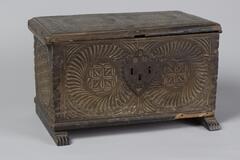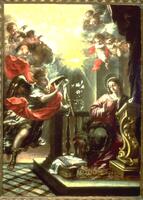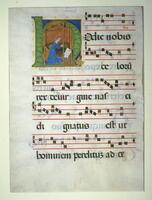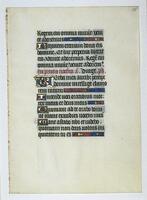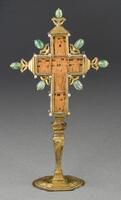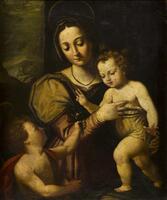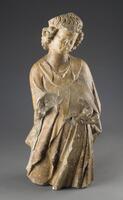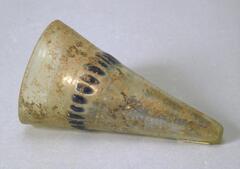96 Items in this Learning Collection
Collection Object
Collection Object
Collection Object
Collection Object
Collection Object
Collection Object
Collection Object
Collection Object
Collection Object
Collection Object
Collection Object
Collection Object
Collection Object
Collection Object
Collection Object
Collection Object
Collection Object
Collection Object
Collection Object
Collection Object
Collection Object
Collection Object
Collection Object
Collection Object
Collection Object
Collection Object
Collection Object
Collection Object
Collection Object
Collection Object
Collection Object
Collection Object
Collection Object
Collection Object
Collection Object
Collection Object
Collection Object
Collection Object
Collection Object
Collection Object
Collection Object
Collection Object
Collection Object
Collection Object
Collection Object
Collection Object
Collection Object
Collection Object
Collection Object
Collection Object
Collection Object
Collection Object
Collection Object
Collection Object
Collection Object
Collection Object
Collection Object
Collection Object
Collection Object
Collection Object
Collection Object
Collection Object
Collection Object
Collection Object
Collection Object
Collection Object
Collection Object
Collection Object
Collection Object
Collection Object
Collection Object
Collection Object
Collection Object
Collection Object
Collection Object
Collection Object
Collection Object
Collection Object
Copyright
All Rights Reserved
()
Luhrasp Addresses the Heroes, from the Shahnama of Firdausi
Accession Number
1963/1.58
Title
Luhrasp Addresses the Heroes, from the Shahnama of Firdausi
Artist(s)
Iranian
Artist Nationality
Iranian
Object Creation Date
circa 1460
Medium & Support
ink, opaque watercolor, and gold leaf on paper
Dimensions
10 1/2 in. x 7 in. ( 26.7 cm x 17.8 cm )
Credit Line
Museum Purchase
Label copy
Having vanquished Afrasiyab at last (see 1963/1.57), Shah Khusrau reigned in triumph for only a short time before he withdrew into long periods of prayer. He had become obsessed with the fear that the faults of his grandfathers—the evil sorcerer Afrasiyab, King of Turan, on the maternal side, and the greedy and foolish Shah Kai Kaus, on the paternal side—would overtake him in old age. In a vision, Khusrau was advised that if he relinquished the throne to Luhrasp, a descendant of an earlier Iranian shah, he would be welcomed directly into paradise. Khusrau bestowed the crown on Luhrasp and rode off into the mountains, never to return.
Khusrau commanded that Luhrasp should come,
And said to him: “My day hath passed. Go thou,
Maintain the usage of the royal throne,
And in the world sow but the seed of good.” …
The warriors [who had followed Khusrau to the mountains] slept in pain, and when the sun
Rose o’er the hills the Shah had disappeared.
When from the troops escorting Kai Khusrau
Luhrasp had tidings how the Shah had fared
He sat with crown of gold upon the throne,
The heroes with their golden girdles came,
And, when the illustrious men and chief estates
Had ta’en their seats, Luhrasp looked round, arose,
Spake with good feeling and straightforwardness,
And said: “O leaders of the host! Ye all
Have heard the parting counsels of the Shah.
All that he said and bade me will I do,
Will strive for good, and carry out his will.”
Warner, IV, 305–11
In this scene, the artist has focused not upon Khusrau’s disappearance but on the new shah’s first audience with his nobles. In a well-established compositional type, Luhrasp sits upon his new throne at the right, while a group of courtiers face him from a deferential distance at left. The setting appears to be a palace room with painted or tiled walls, silk canopies above, and an interior atrium.
———
Maribeth Graybill, Senior Curator of Asian Art
Exhibited in "A Medieval Masterpiece from Baghdad: the Ann Arbor Shahnama"
August 14 through December 19, 2004
Subject matter
Khusrau commanded that Luhrasp should come,
And said to him: “My day hath passed. Go thou,
Maintain the usage of the royal throne,
And in the world sow but the seed of good.” …
The warriors [who had followed Khusrau to the mountains] slept in pain, and when the sun
Rose o’er the hills the Shah had disappeared.
When from the troops escorting Kai Khusrau
Luhrasp had tidings how the Shah had fared
He sat with crown of gold upon the throne,
The heroes with their golden girdles came,
And, when the illustrious men and chief estates
Had ta’en their seats, Luhrasp looked round, arose,
Spake with good feeling and straightforwardness,
And said: “O leaders of the host! Ye all
Have heard the parting counsels of the Shah.
All that he said and bade me will I do,
Will strive for good, and carry out his will.”
Physical Description
This Persian miniature is attributed to the Shiraz and Timurid schools, ca. 1460. The painting is done in ink, opaque watercolor and gold leaf on paper. The scene, Luhrasp Addresses the Heroes, is part of the Shahnama of Firdausi, the Persian book of kings.
Primary Object Classification
Painting
Collection Area
Western
Rights
If you are interested in using an image for a publication, please visit http://umma.umich.edu/request-image for more information and to fill out the online Image Rights and Reproductions Request Form.
Keywords
Iranian Islamic painting styles after the Mongols
Iranian Islamic styles after the Mongols
Persian-Farsi (language)
Shahnama
Timurid
Timurid painting styles
calligraphy (visual works)
gold leaf
gouaches (paintings)
man
miniatures (paintings)
shahs
watercolor painting (technique)
1963/1.58
Title
Luhrasp Addresses the Heroes, from the Shahnama of Firdausi
Artist(s)
Iranian
Artist Nationality
Iranian
Object Creation Date
circa 1460
Medium & Support
ink, opaque watercolor, and gold leaf on paper
Dimensions
10 1/2 in. x 7 in. ( 26.7 cm x 17.8 cm )
Credit Line
Museum Purchase
Label copy
Having vanquished Afrasiyab at last (see 1963/1.57), Shah Khusrau reigned in triumph for only a short time before he withdrew into long periods of prayer. He had become obsessed with the fear that the faults of his grandfathers—the evil sorcerer Afrasiyab, King of Turan, on the maternal side, and the greedy and foolish Shah Kai Kaus, on the paternal side—would overtake him in old age. In a vision, Khusrau was advised that if he relinquished the throne to Luhrasp, a descendant of an earlier Iranian shah, he would be welcomed directly into paradise. Khusrau bestowed the crown on Luhrasp and rode off into the mountains, never to return.
Khusrau commanded that Luhrasp should come,
And said to him: “My day hath passed. Go thou,
Maintain the usage of the royal throne,
And in the world sow but the seed of good.” …
The warriors [who had followed Khusrau to the mountains] slept in pain, and when the sun
Rose o’er the hills the Shah had disappeared.
When from the troops escorting Kai Khusrau
Luhrasp had tidings how the Shah had fared
He sat with crown of gold upon the throne,
The heroes with their golden girdles came,
And, when the illustrious men and chief estates
Had ta’en their seats, Luhrasp looked round, arose,
Spake with good feeling and straightforwardness,
And said: “O leaders of the host! Ye all
Have heard the parting counsels of the Shah.
All that he said and bade me will I do,
Will strive for good, and carry out his will.”
Warner, IV, 305–11
In this scene, the artist has focused not upon Khusrau’s disappearance but on the new shah’s first audience with his nobles. In a well-established compositional type, Luhrasp sits upon his new throne at the right, while a group of courtiers face him from a deferential distance at left. The setting appears to be a palace room with painted or tiled walls, silk canopies above, and an interior atrium.
———
Maribeth Graybill, Senior Curator of Asian Art
Exhibited in "A Medieval Masterpiece from Baghdad: the Ann Arbor Shahnama"
August 14 through December 19, 2004
Subject matter
Khusrau commanded that Luhrasp should come,
And said to him: “My day hath passed. Go thou,
Maintain the usage of the royal throne,
And in the world sow but the seed of good.” …
The warriors [who had followed Khusrau to the mountains] slept in pain, and when the sun
Rose o’er the hills the Shah had disappeared.
When from the troops escorting Kai Khusrau
Luhrasp had tidings how the Shah had fared
He sat with crown of gold upon the throne,
The heroes with their golden girdles came,
And, when the illustrious men and chief estates
Had ta’en their seats, Luhrasp looked round, arose,
Spake with good feeling and straightforwardness,
And said: “O leaders of the host! Ye all
Have heard the parting counsels of the Shah.
All that he said and bade me will I do,
Will strive for good, and carry out his will.”
Physical Description
This Persian miniature is attributed to the Shiraz and Timurid schools, ca. 1460. The painting is done in ink, opaque watercolor and gold leaf on paper. The scene, Luhrasp Addresses the Heroes, is part of the Shahnama of Firdausi, the Persian book of kings.
Primary Object Classification
Painting
Collection Area
Western
Rights
If you are interested in using an image for a publication, please visit http://umma.umich.edu/request-image for more information and to fill out the online Image Rights and Reproductions Request Form.
Keywords
Iranian Islamic painting styles after the Mongols
Iranian Islamic styles after the Mongols
Persian-Farsi (language)
Shahnama
Timurid
Timurid painting styles
calligraphy (visual works)
gold leaf
gouaches (paintings)
man
miniatures (paintings)
shahs
watercolor painting (technique)
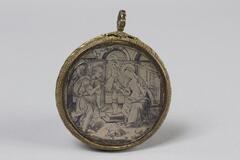
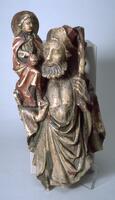
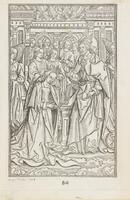
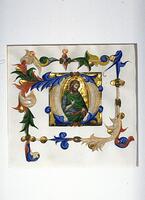
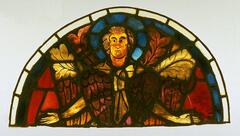

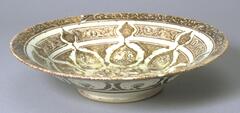
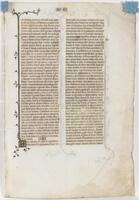
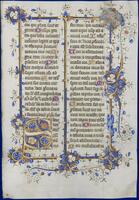

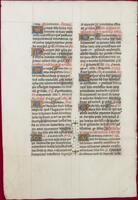
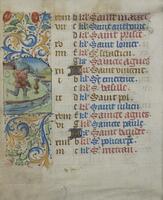
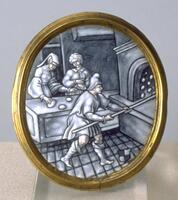
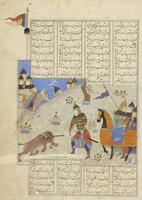
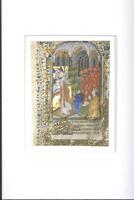


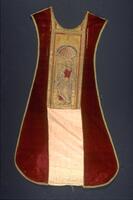

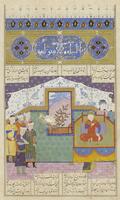

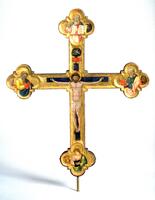
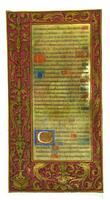
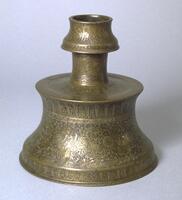
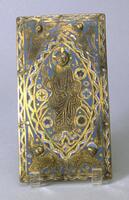
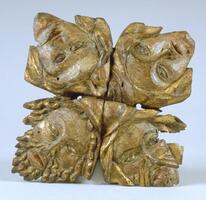
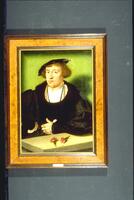
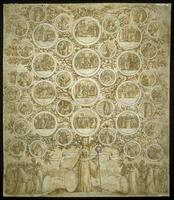
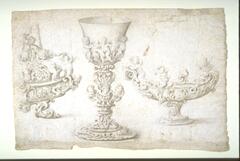
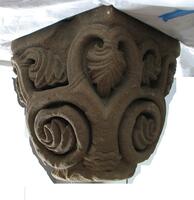
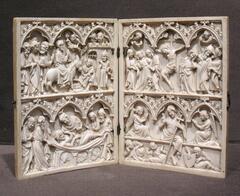
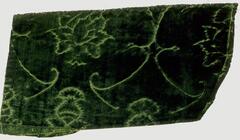
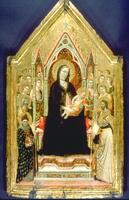
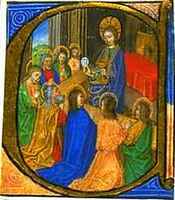



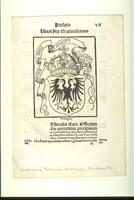

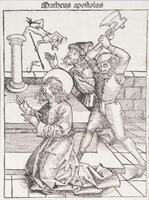
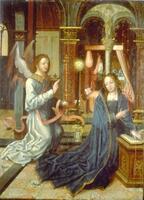
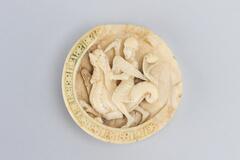


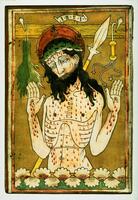

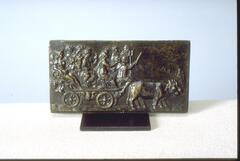
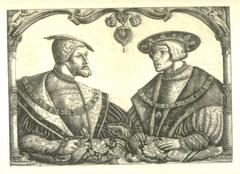
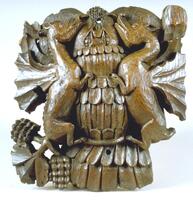
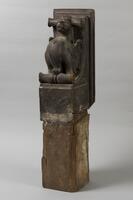
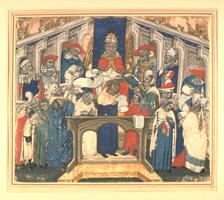
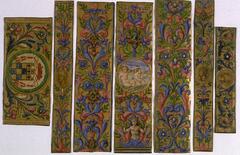
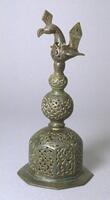
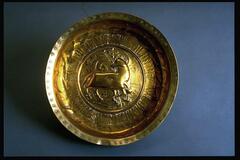

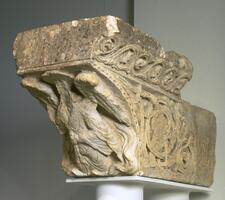
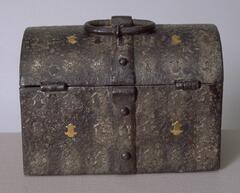
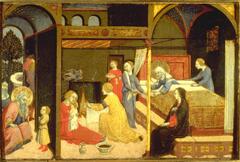

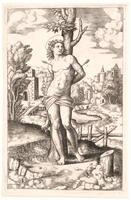
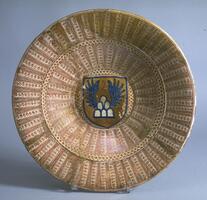
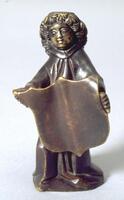


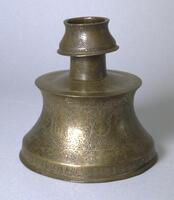
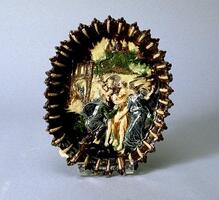
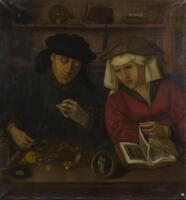
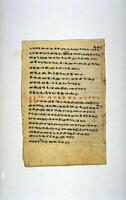

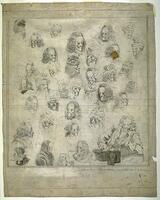
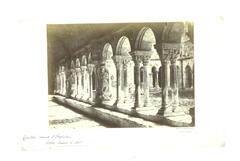
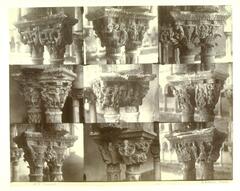

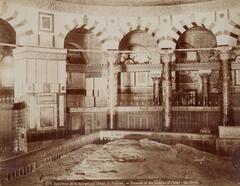
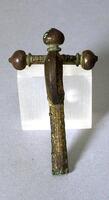
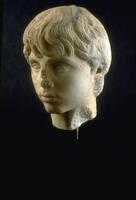

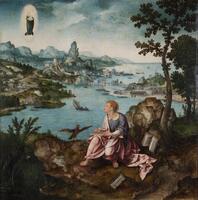

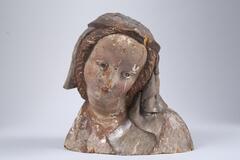
![This rectangular panel depicts four sacred figures rendered in dark hues with passages of vibrant red against a gold background. The upper edge of the gilded frame bears the prayer known as the "Hail Mary" ("Ave Maria Gratia Plena Domin[us tecum]"). This rectangular panel depicts four sacred figures rendered in dark hues with passages of vibrant red against a gold background. The upper edge of the gilded frame bears the prayer known as the "Hail Mary" ("Ave Maria Gratia Plena Domin[us tecum]").](/media/W1siZiIsIjIwMjIvMDUvMjUvMzZ5bWpwaTBuNl9kZWZhdWx0LmpwZyJdLFsicCIsInRodW1iIiwiMjQweDIwMCJdXQ?sha=182c62b7143d052b)

